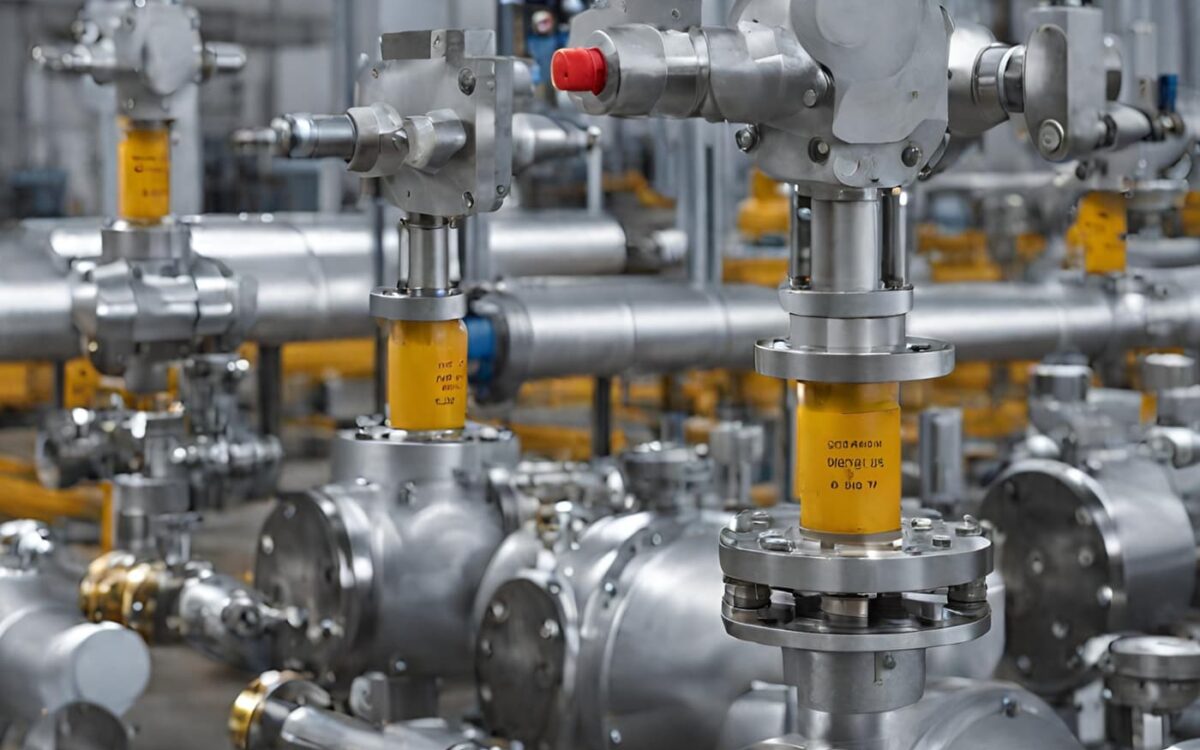Control valves serve as vital components that manage the flow of fluids and gasses, ensuring precision and efficiency. Among the decisions in control valve selection, one fundamental choice stands out: the method of actuation. Manual control valve actuation, where operators make adjustments by hand, and automatic control valve actuation, where the valves respond to signals, offer distinct advantages and considerations. This article explores these two actuation methods, shedding light on bell & gossett pressure & flow control valves.
Manual Control Valve Actuation
Manual control valve actuation is a traditional method where human operators directly adjust the valve position to control the flow. This method offers simplicity and reliability, making it suitable for various applications.
Advantages:
- Precision: Operators can fine-tune valve settings for precise control.
- Reliability: Manual valves are less prone to electronic or mechanical failures.
- Cost-Effective: They often have a lower initial cost compared to automatic valves.
Disadvantages:
- Labor-Intensive: Requires continuous operator involvement, which may not be ideal for some processes.
- Slower Response: Manual adjustments may not respond as quickly as automatic systems to changing conditions.
- Limited Remote Control: Operators need to be physically present for adjustments.
Manual control valve actuation is commonly used in applications where simplicity and human oversight are paramount, such as small-scale systems or processes with well-defined operating conditions.
Automatic Control Valve Actuation
Automatic control valve actuation involves using external signals or controllers to regulate valve positions. This method offers automation and precise control, making it ideal for complex and dynamic processes.
Advantages:
- Automation: Requires minimal operator intervention, allowing for unmanned operation.
- Precision: Can respond rapidly to changing conditions, ensuring accurate control.
- Remote Control: Operators can adjust valves from a central control room.
- Data Logging: Automatic systems can record data for analysis and optimization.
Disadvantages:
- Complexity: Automatic systems are more intricate and may require skilled maintenance.
- Higher Initial Cost: They often have a higher upfront investment.
- Vulnerability to Malfunctions: Electronic or mechanical failures can disrupt operations.
Automatic control valve actuation is prevalent in industries where continuous, precise control and remote monitoring are essential, such as oil and gas, chemical manufacturing, and water treatment.
Comparison: Manual vs. Automatic Control Valve Actuation
The choice between manual and automatic control valve actuation depends on several factors, including the process requirements, budget constraints, and the desired level of automation.
Manual control valves are suitable for applications where:
- Operators require direct, hands-on control.
- Processes have stable and well-defined operating conditions.
- Budget constraints limit upfront investments.
On the other hand, automatic control valves are preferred when:
- Precision and rapid response are critical.
- Unmanned or remote operation is necessary.
- Data logging and process optimization are priorities.
- Process conditions are dynamic and unpredictable.
In many cases, a combination of both methods is employed, with manual valves for basic control and automatic valves for fine-tuning and optimization. The key is to align the actuation method with the specific needs of the process, considering factors like control complexity, maintenance resources, and long-term operational efficiency.
Applications and Industries
Manual control valve actuation finds common applications in small-scale manufacturing, laboratory setups, and systems where hands-on adjustments are sufficient. Industries such as food and beverage, HVAC, and municipal water supply often use manual control valves for their simplicity and cost-effectiveness.
Hayward flow control pressure & flow control valves are prevalent in industries requiring precise control, automation, and remote monitoring. It is extensively used in oil and gas production, chemical manufacturing, wastewater treatment, and power generation. In these sectors, the ability to respond quickly to changing conditions, minimize human intervention, and optimize processes are critical for efficiency and safety.
Advancements in Control Valve Actuation
Advancements in control valve actuation have transformed the capabilities of both manual and automatic systems, addressing various challenges and enhancing performance.
In manual actuation, manufacturers have introduced ergonomic design improvements, making valve adjustments more comfortable and reducing operator fatigue. These innovations lead to increased productivity and greater accuracy in manual control valve settings. Furthermore, materials and coatings have been developed to improve the durability of manual valve components, extending their lifespan and reducing maintenance needs.
Automatic control valve actuation benefits significantly from technological advancements. The integration of sophisticated control algorithms and digital communication protocols has enhanced precision and responsiveness. Additionally, the adoption of smart diagnostics allows for early detection of potential issues, enabling proactive maintenance and minimizing downtime.
One notable development is the increasing use of Industrial Internet of Things (IIoT) technology in control valve actuation. IIoT enables remote monitoring and predictive maintenance, empowering industries to optimize their processes further. With real-time data and analytics, operators can make informed decisions, enhance system efficiency, and reduce operational costs.
As these technological advancements continue to shape the field of control valve actuation, industries can expect even more reliable, efficient, and intelligent control solutions for their critical processes.
Conclusion
In conclusion, the choice between manual and automatic control valve actuation methods is a crucial decision in industrial processes. While manual actuation offers simplicity and cost-effectiveness, automatic systems provide precision, automation, and remote control. The selection should align with the specific needs of the process, considering factors like control complexity, industry requirements, and long-term operational goals. Advances in control valve technology continue to enhance the capabilities of both methods, ensuring efficient and reliable control in diverse applications.
